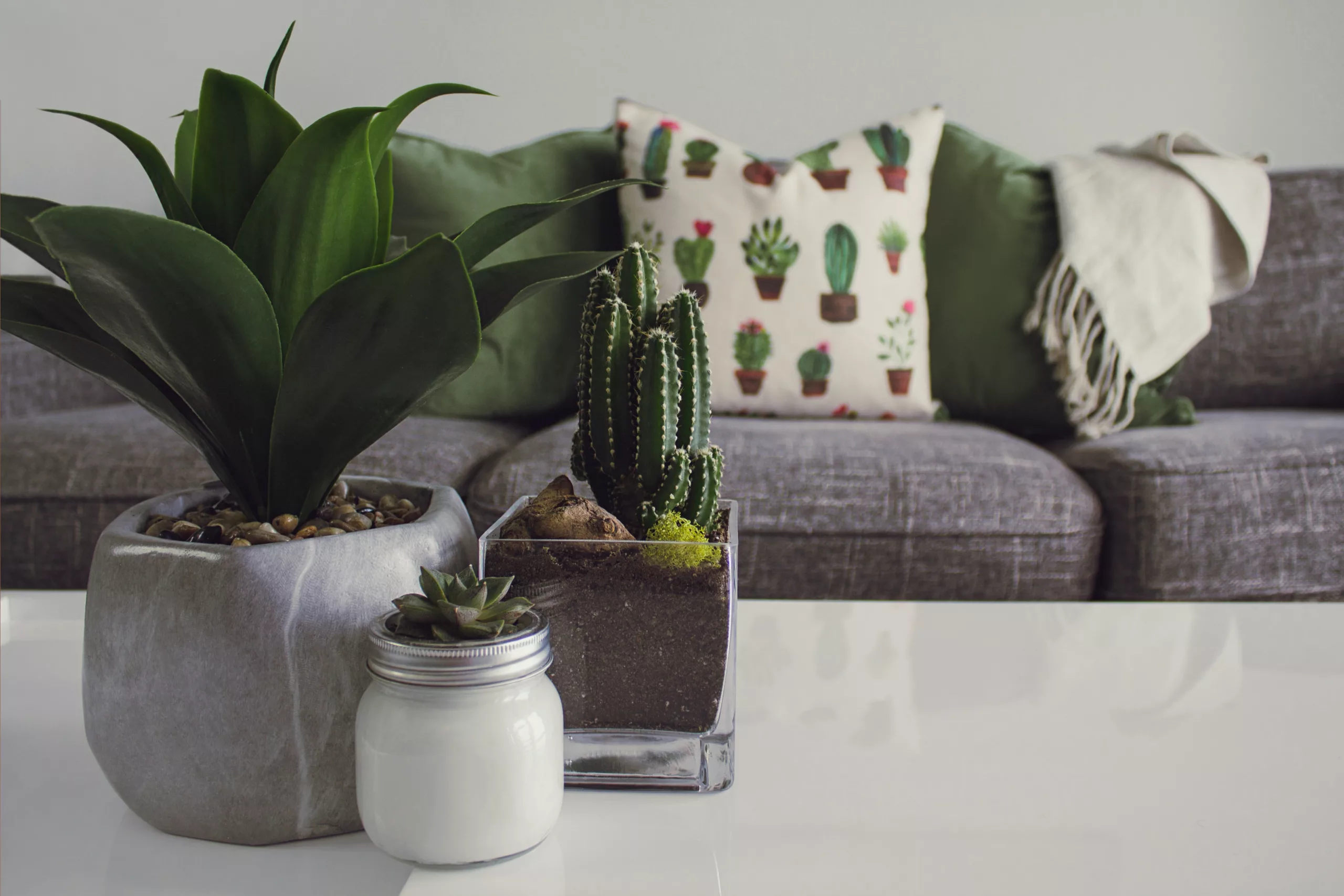Fly control at home is a concern that transcends mere annoyance. It’s a matter of health, hygiene, and comfort. While there are various commercial fly repellents available, they often come with environmental drawbacks and potential health risks. An age-old and organic pest management solution is right at your doorstep: fly repellent plants. Let’s delve into the world of natural, green pest solutions.

Top 10 Fly Repellent Plants for Your Home
1. Basil

Basil, a leafy green herb, features pointed leaves and can grow 12-24 inches tall. It produces small white or purple flowers and thrives in warm weather.
Origin and Natural Habitat: Basil originates from tropical regions of Asia and Africa.
Fly Repellent Properties: The strong, aromatic oils emitted from basil leaves are what repel flies.
Additional Benefits: Besides being a popular culinary herb, basil can also repel mosquitoes and has some medicinal properties, including anti-inflammatory and antibacterial benefits.
How to Grow and Care: Basil prefers warm conditions and should be placed in a spot that receives 6-8 hours of full sunlight each day. The soil should be well-drained and rich in organic matter. Regular watering is necessary, but avoid watering the leaves as it can lead to disease. Frequent pruning will help the plant to branch out and produce more leaves.
2. Lavender

Lavender is an evergreen plant with beautiful purple flowers and a calming scent.
Origin and Natural Habitat: Native to the Mediterranean, Middle East, and India.
Fly Repellent Properties: Lavender’s fragrant volatile oils are disliked by flies.
Additional Benefits: Lavender is known for its soothing aroma, making it popular for aromatherapy. It also repels mosquitoes and moths.
How to Grow and Care: Lavender plants need full sunlight and well-drained soil, preferably sandy or gravelly. They prefer slightly alkaline pH. Water them sparingly and let the soil dry out between watering sessions as they are drought-resistant and susceptible to root rot from overwatering. Prune annually to maintain their shape and promote vigorous growth.
3. Rosemary

Rosemary is an aromatic, evergreen shrub with needle-like leaves and white, pink, purple, or blue flowers.
Origin and Natural Habitat: It’s native to the Mediterranean and Asia.
Fly Repellent Properties: Its strong fragrance can deter flies.
Additional Benefits: Apart from its culinary uses, rosemary also repels mosquitoes and has medicinal properties.
How to Grow and Care: Rosemary plants prefer full sun and well-drained, sandy soil. They are drought-resistant and do not require a lot of water. Wait until the top of the soil is dry before watering again. Pruning is not necessary for the first year, but subsequent light pruning can help the plant maintain its shape.
4. Lemongrass

Lemongrass is a tall, perennial grass with a citrusy aroma.
Origin and Natural Habitat: It’s native to tropical regions of Asia.
Fly Repellent Properties: Lemongrass contains citronella, a natural oil that deters flies.
Additional Benefits: Lemongrass is used in cooking, tea, and essential oils. It also repels mosquitoes.
How to Grow and Care: Lemongrass loves full sun and well-drained soil. It requires regular watering and prefers a neutral to slightly acidic pH. During winter or colder months, bring the plant indoors if possible, as it cannot withstand frost. Lemongrass is a heavy feeder and benefits from regular fertilizing.
5. Mint

Mint is a fast-growing, spreading plant with a refreshing aroma. It produces small, white to purple flowers.
Origin and Natural Habitat: Mint is native to Europe and the Middle East.
Fly Repellent Properties: Its strong scent deters flies.
Additional Benefits: Mint is used in many dishes and drinks. It also repels ants and spiders.
How to Grow and Care: Mint prefers partial shade to full sun. The soil should be well-drained and kept consistently moist. Mint can be invasive, so it’s best grown in pots unless you want it to take over your garden. Regular pruning helps promote more bushy growth.
6. Marigold

Marigold features bright, cheerful flowers that come in shades of yellow, orange, and red.
Origin and Natural Habitat: It’s native to the Americas.
Fly Repellent Properties: Marigold contains pyrethrum, a compound that repels flies.
Additional Benefits: Marigold also repels mosquitoes, aphids, and even rabbits.
How to Grow and Care: Marigolds need full sun and well-drained soil. They’re quite drought-tolerant but will bloom better with regular, light watering. Avoid overwatering as this can lead to root rot. Deadhead spent flowers to encourage more blooming.
7. Catnip

Catnip is a member of the mint family, with grey-green leaves and white flowers with purple spots.
Origin and Natural Habitat: It’s native to Europe, Asia, and Africa.
Fly Repellent Properties: The nepetalactone in catnip is a powerful insect deterrent.
Additional Benefits: Catnip is infamous for attracting cats. It also repels mosquitoes and cockroaches.
How to Grow and Care: Catnip does well in full sun to partial shade. It prefers well-drained, sandy, or loamy soil, with a pH range of 6.1 to 7.8. Water it regularly but do not overwater as it’s moderately drought-tolerant. Pruning the flowers will lead to a bushier plant.
8. Bay Leaves

Bay leaf plants are evergreen shrubs or trees that can grow quite large if not pruned. The leaves are aromatic.
Origin and Natural Habitat: It’s native to the Mediterranean region.
Fly Repellent Properties: The scent of the leaves repels flies.
Additional Benefits: Bay leaves are used for flavoring in cooking.
How to Grow and Care: Bay Leaf plants need full sun to partial shade. They prefer well-drained soil with a neutral pH. Water regularly, allowing the soil to dry out between watering. They can be pruned into different shapes and are often used as hedging plants.
9. Wormwood

Wormwood is a perennial plant with silvery-green foliage and yellow or red-brown flowers.
Origin and Natural Habitat: It’s native to temperate regions of Eurasia and Northern Africa.
Fly Repellent Properties: Its strong antiseptic-like scent repels flies.
Additional Benefits: Wormwood is used in some alcoholic beverages and has medicinal properties.
How to Grow and Care: Wormwood prefers full sun and well-drained soil. It can tolerate poor soil conditions and is drought-resistant, so be careful not to overwater. Pruning in spring will keep the plant compact and encourage more growth.
10. Chrysanthemums

Chrysanthemums, also known as mums or chrysanths, are flowering plants with large, showy heads and a variety of colors.
Origin and Natural Habitat: It’s native to Asia and northeastern Europe.
Fly Repellent Properties: Chrysanthemums contain pyrethrins, natural insecticides that repel flies.
Additional Benefits: They are popular ornamental flowers and also repel mosquitoes, roaches, beetles, and ticks.
How to Grow and Care: Chrysanthemums need a minimum of 5-6 hours of sunlight daily. They prefer well-drained, high-fertility soil with a pH of 6.5 to 6.7. Water deeply at the roots whenever the top inch of soil is dry and avoid overhead watering to prevent disease. Regular deadheading will encourage more blooms.
History of Using Plants for Pest Control
Plants have been used as natural insect repellents for centuries across different cultures. From using citronella to deter mosquitoes to planting marigolds in gardens to keep bugs away, traditional knowledge has always leaned towards non-toxic fly solutions. However, with industrialization, artificial chemicals took over, only for us to rediscover the importance of organic methods in our pursuit of sustainable living.
Why Choose Plants as Fly Repellents?

Choosing plants as fly repellents resonates with conscious living. They don’t just deter flies; they enhance the aesthetic value of our spaces. Here’s why using plants for indoor and outdoor fly control is wise:
- Environmentally Friendly: Unlike chemical repellents, plants don’t harm the environment. They are a symbol of eco-friendly fly control, contributing to the larger picture of green living.
- Multifunctional: Many fly repellent plants serve other purposes, such as culinary or medicinal uses.
- Safe for Pets and Children: Plants are non-toxic and safe around pets and children, unlike synthetic chemicals.
The Science Behind Fly Repellent Plants
Certain plants emit fragrances that are unattractive to flies. These smells, often pleasant to humans, disrupt the olfactory signals in flies, repelling them. This fascinating natural adaptation has been used by different cultures and is a core aspect of environmentally friendly fly repellent strategies today.
How to Effectively Use These Plants in Your Home?

- Indoor Placement: Near windows, doors, and in the kitchen.
- Outdoor Placement: Around patios and pathways.
- Care Instructions: Understand the sunlight, water, and soil requirements of each plant for them to grow effectively.
Conclusion
Embracing these DIY pest control solutions can elevate your living space to a sanctuary where nature serves your well-being. Say goodbye to the constant buzzing and hello to a peaceful, fly-free home, all the while contributing to the health of the planet. Explore these top fly repellent plants today and harness nature’s wisdom for a better tomorrow!
Ready for more green thumb advice? Don’t stop at fly repellent plants! Check out our Home & Lifestyle blogs for more gardening hacks, insightful plant care tips, and composting essentials. Cultivate your garden skills and embrace sustainable living. Start exploring now and let your garden flourish!
















